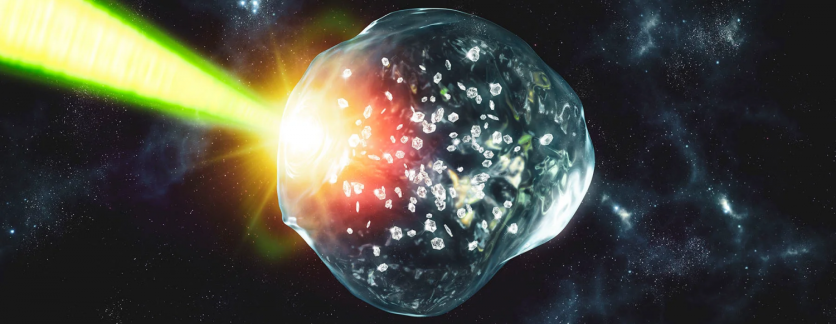Scientists speculated that diamond rain may be falling more frequently on planets throughout the universe after simulating the bizarre precipitation thought to originate deep inside Uranus and Neptune using ordinary plastic, as first reported by AFP.
Researchers formerly hypothesized that thousands of kilometers below the surface of the ice giants, at extreme pressure and temperature levels, serves as a breeding ground for hydrogen and carbon to become solid diamonds.
But a recent study that included oxygen in the mix and was published in Science Advances discovered that "diamond rain" might occur more frequently than previously believed.

Widespread Phenomenon in the Cosmos
Given that ice giant planets like Neptune and Uranus are expected to be the most prevalent type of planets outside of our Solar System, diamond rain may be a widespread phenomenon in the cosmos.
One of the study's authors, Dominik Kraus, a physicist at the German HZDR research facility, noted that diamond precipitation is different from rain on Earth.
The diamonds are thought to originate in a "hot, dense liquid" beneath the planets' surfaces, where they gradually descend to the rocky, potentially Earth-sized cores more than 10,000 kilometers (6,200 miles) below.
According to Kraus, the diamonds that have fallen there may have formed huge layers that extend "hundreds of kilometers or even more."
He claimed that although these diamonds might not be polished and cut like a magnificent gem on a ring, they were created by the same forces that exist on Earth.
Read Also : NASA's James Webb Space Telescope Is Set To Capture Dazzling Clouds of Vaporized Gems On Distant Exoplanets
Duplicating the Diamond Process
To duplicate the process, the study team discovered the right proportion of carbon, hydrogen, and oxygen in PET plastic, which is commonly used for bottles and packaging for food.
Kraus stated that even though the researchers used PET plastic that was extremely clean, the experiment should work with Coca-Cola bottles.
The scientists at California's SLAC National Accelerator Laboratory then used a strong optical laser to cut through the plastic.
"Very, very short X-ray flashes of incredible brightness" allowed them to watch the process of nanodiamonds - tiny diamonds too small to see with the naked eye - as they formed," Krauss explained to AFP.
Kraus added that the abundance of oxygen in some planets aids sucking away the hydrogen atoms from the carbon, making it easier for diamonds to form.
He claimed that laser production may also provide a cleaner and easier regulating process to generate nanodiamonds.
However, this research on diamond rain remains hypothetical since there is still much to know about Uranus and Neptune, two of the most distant planets in our Solar System.
In fact, only NASA's Voyager 2 has traveled past the two ice giants and the data it gathered is still used in research today.
However, a NASA team has proposed a new planet-exploring expedition that may take off within the next ten years, which could provide information about these distant planets.
This article is owned by Tech Times
Written by Joaquin Victor Tacla
ⓒ 2025 TECHTIMES.com All rights reserved. Do not reproduce without permission.




